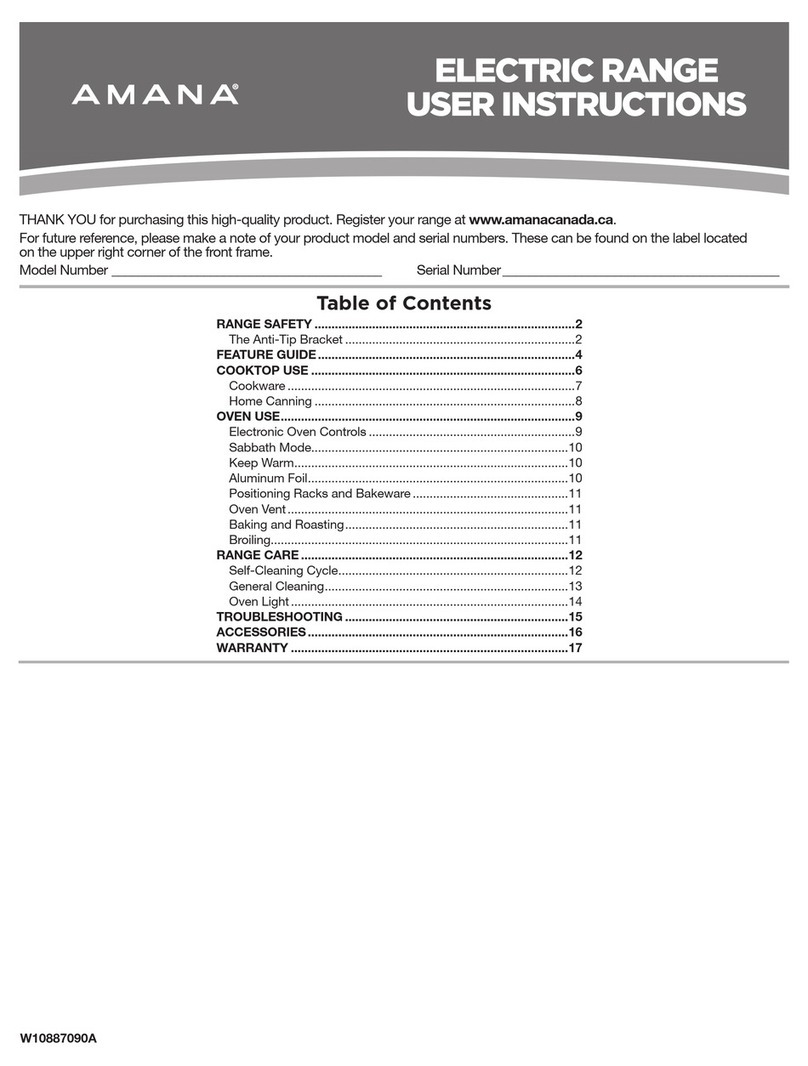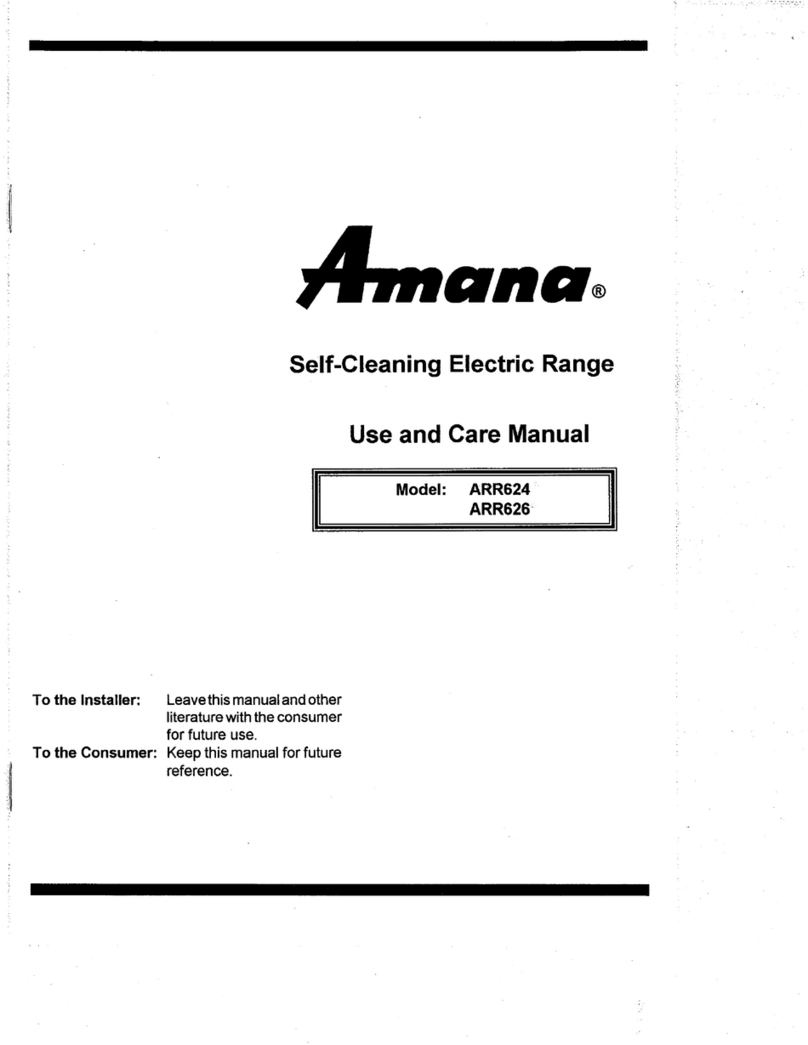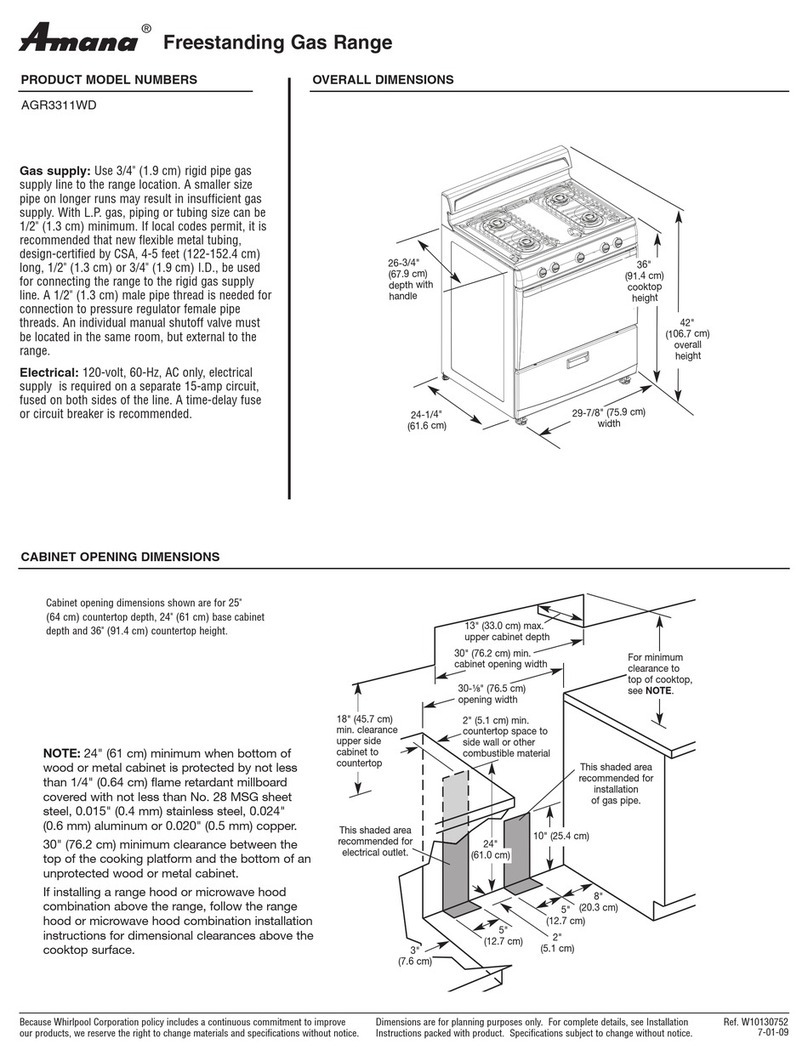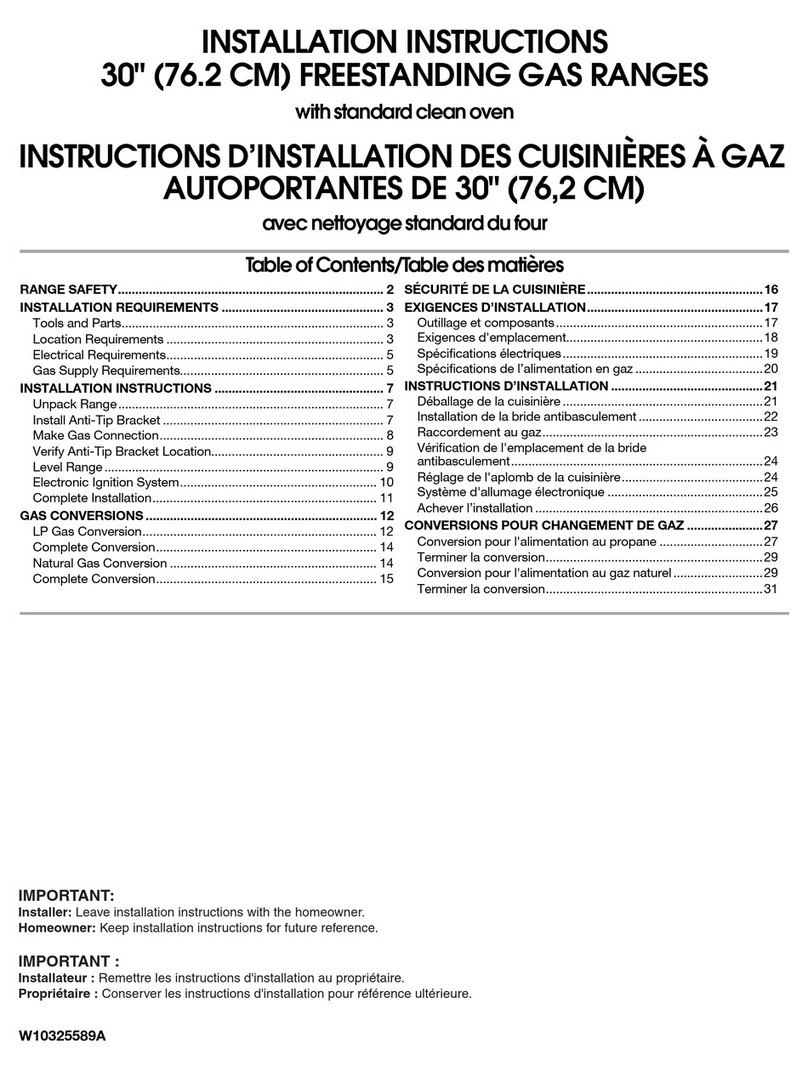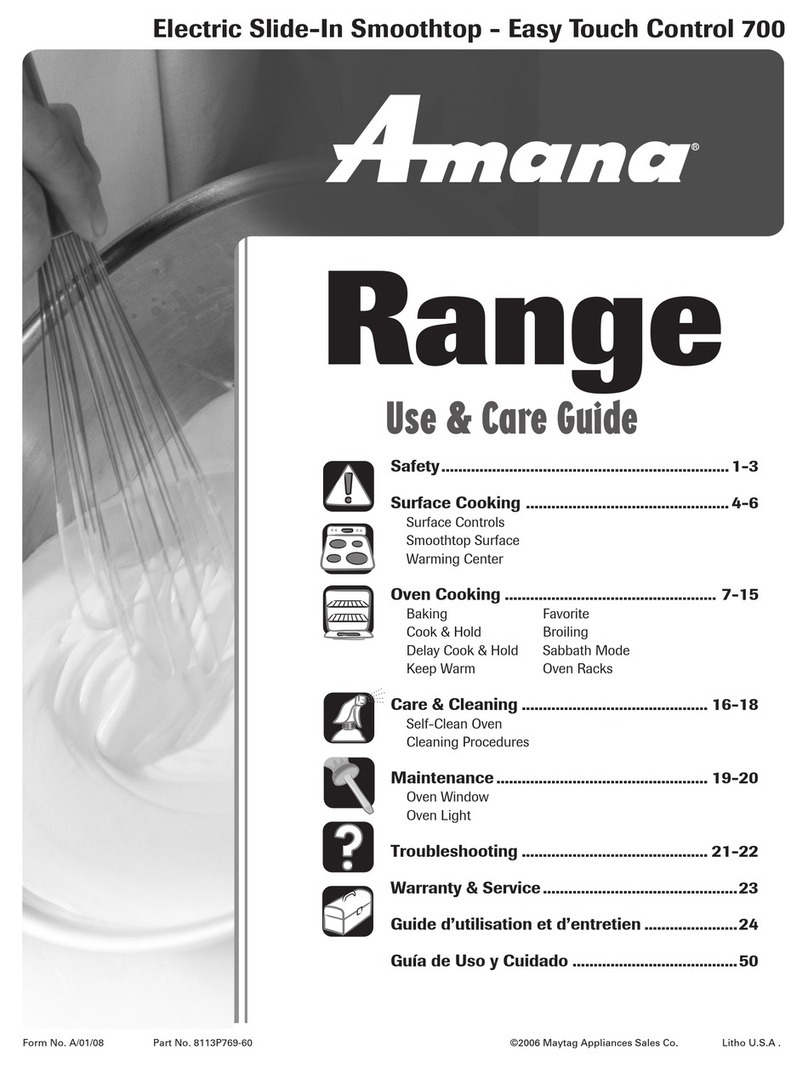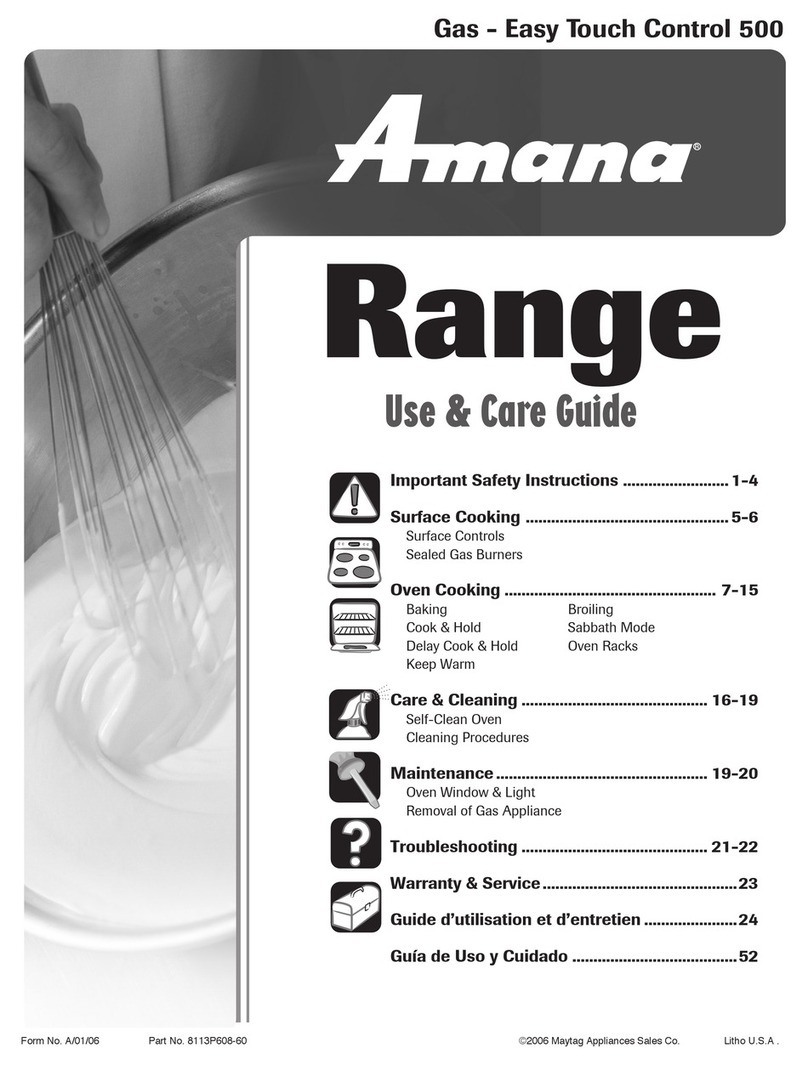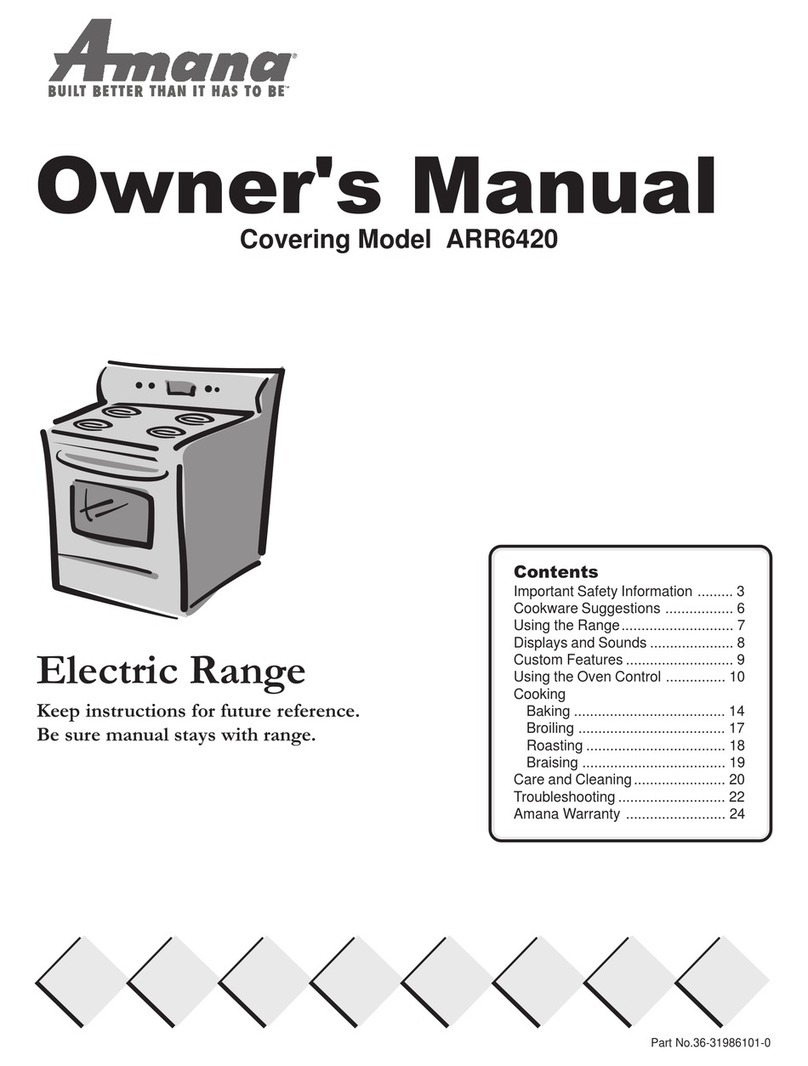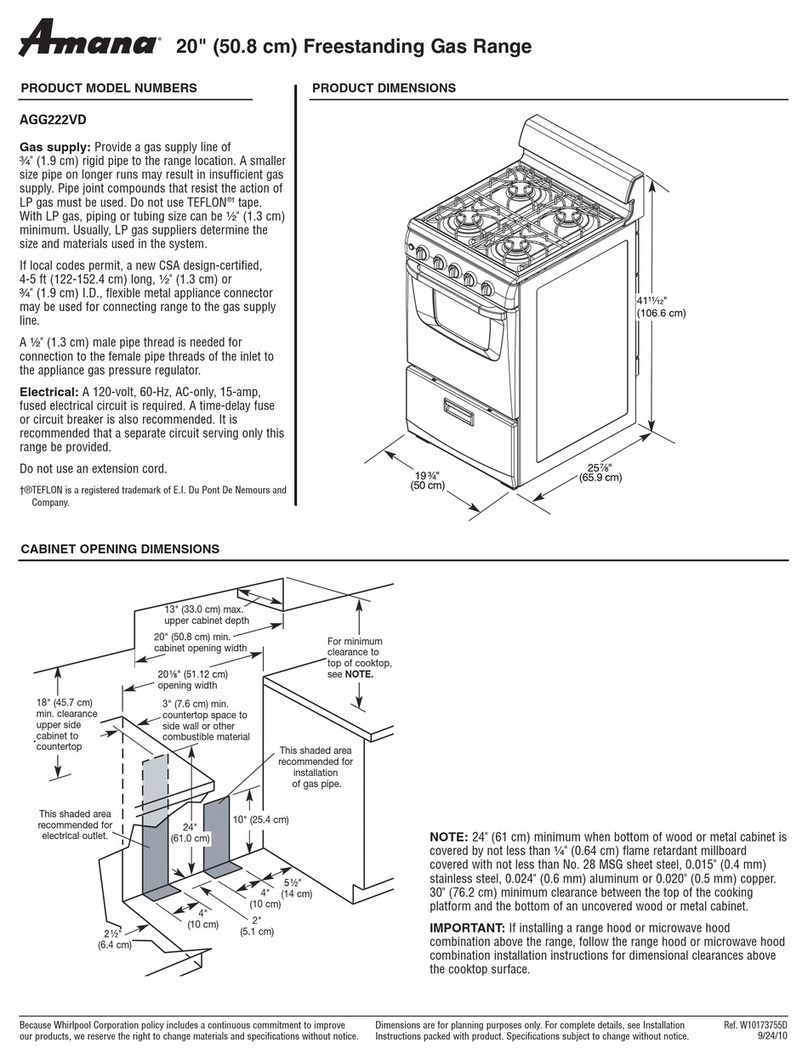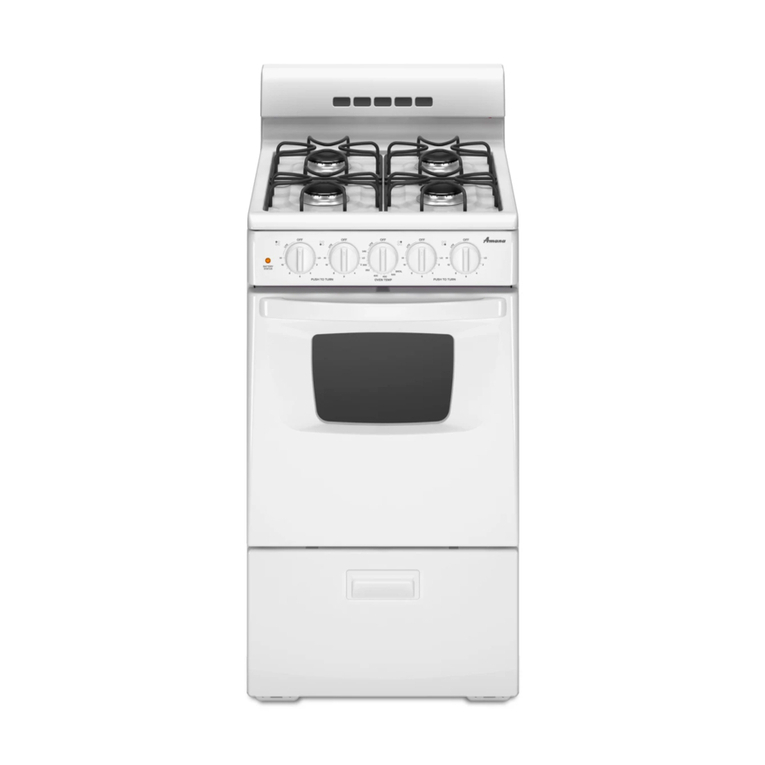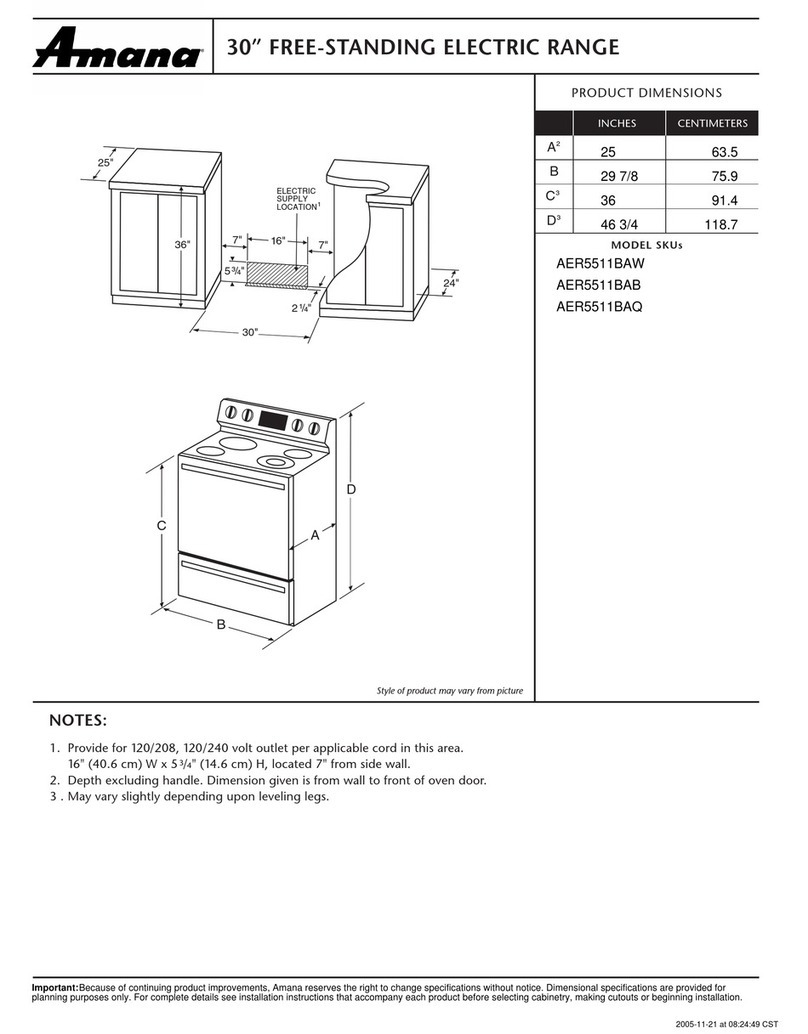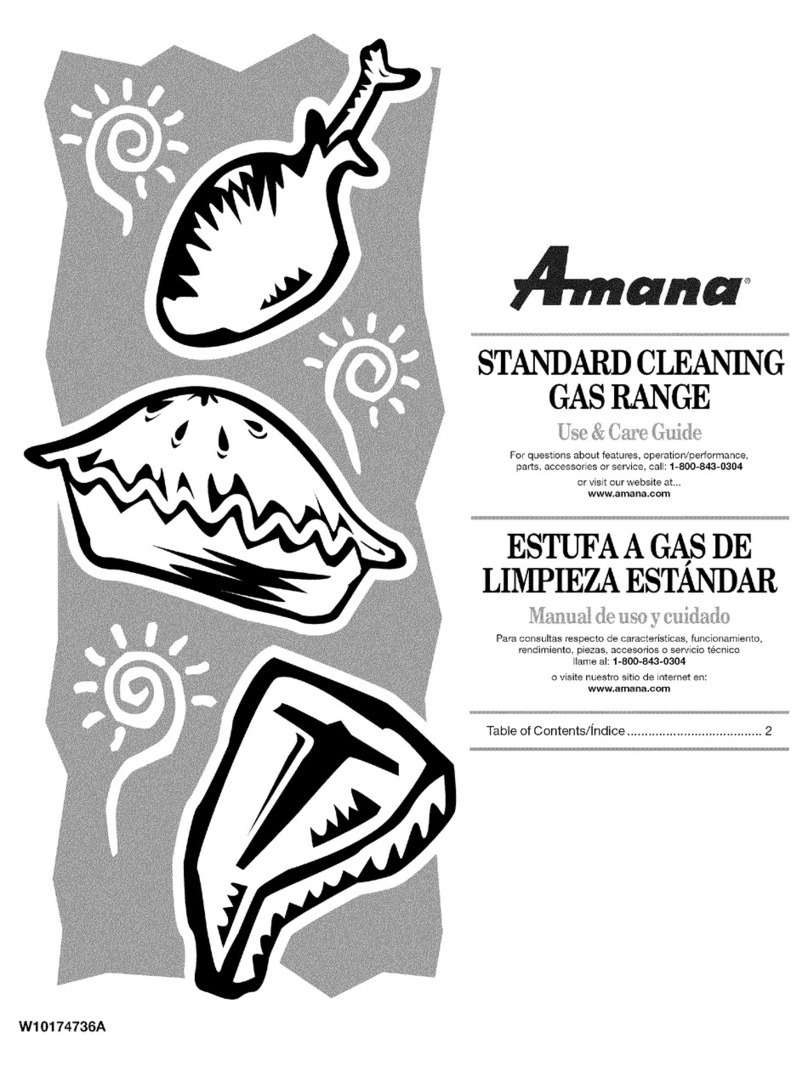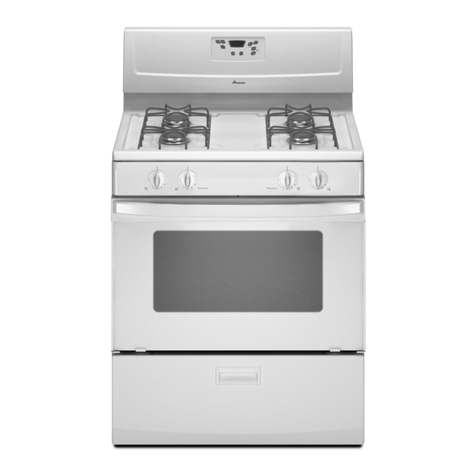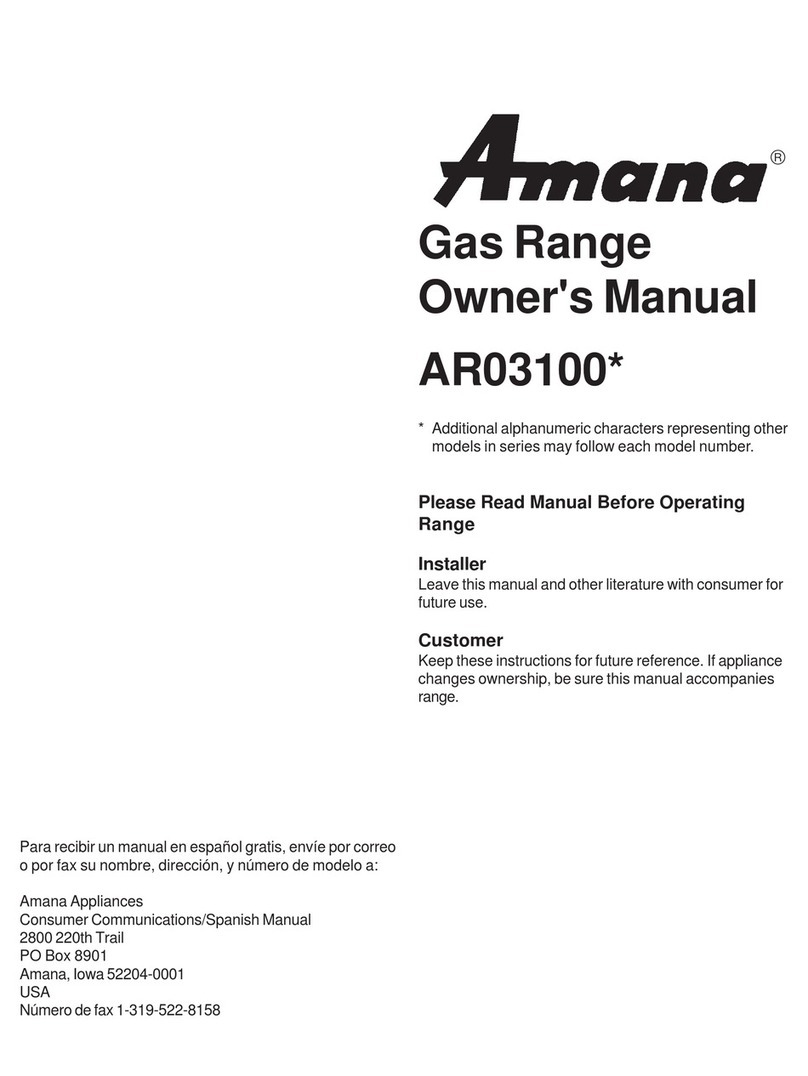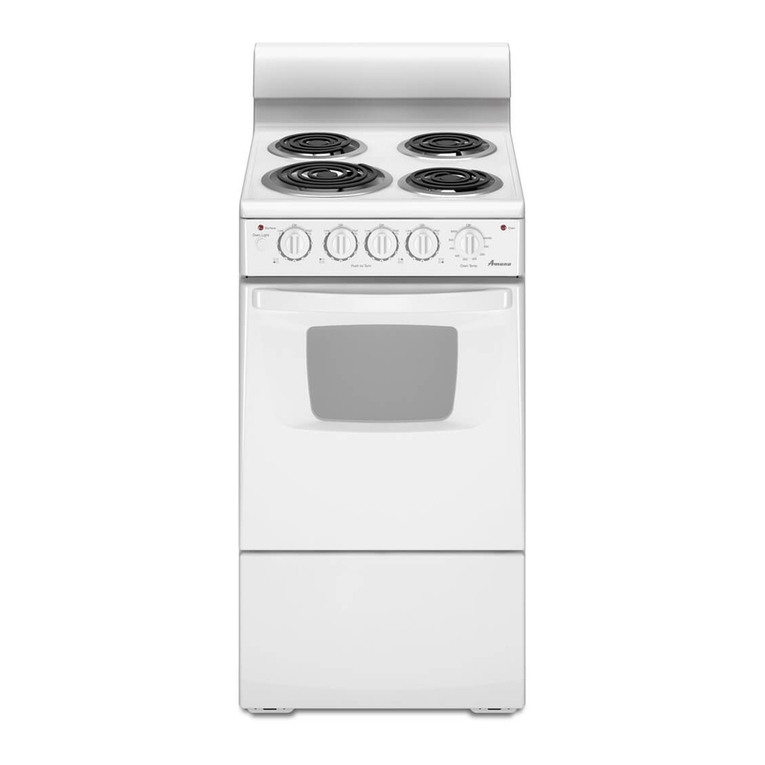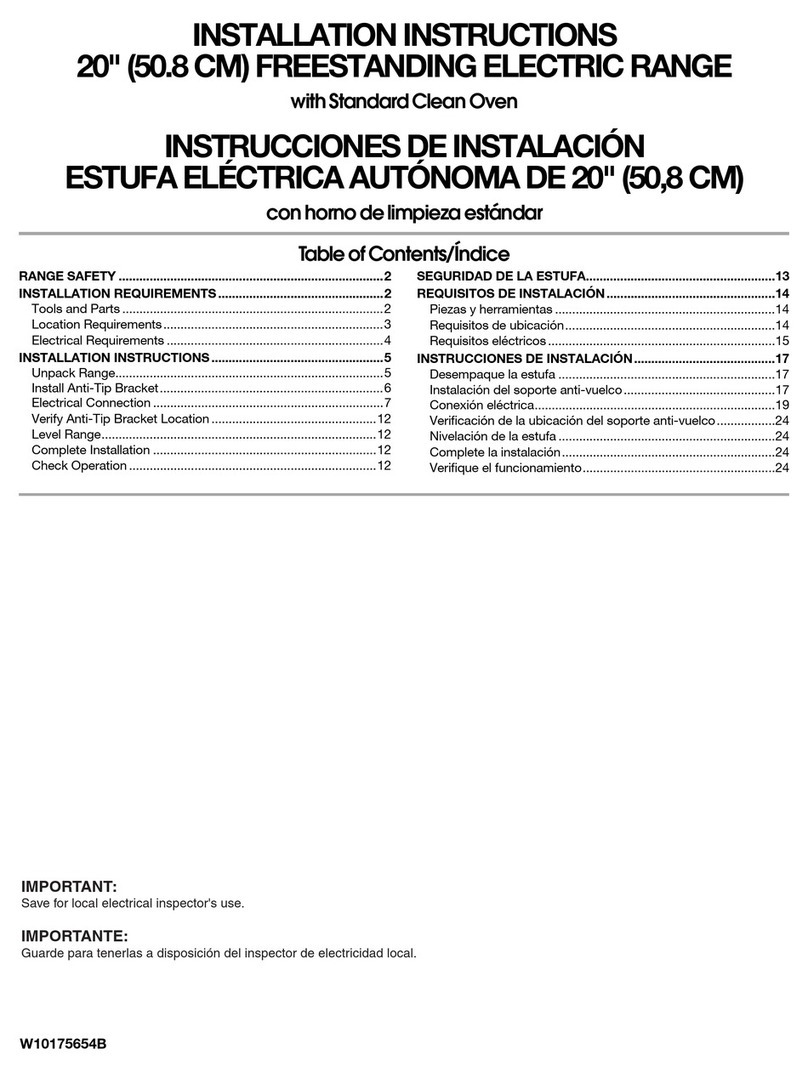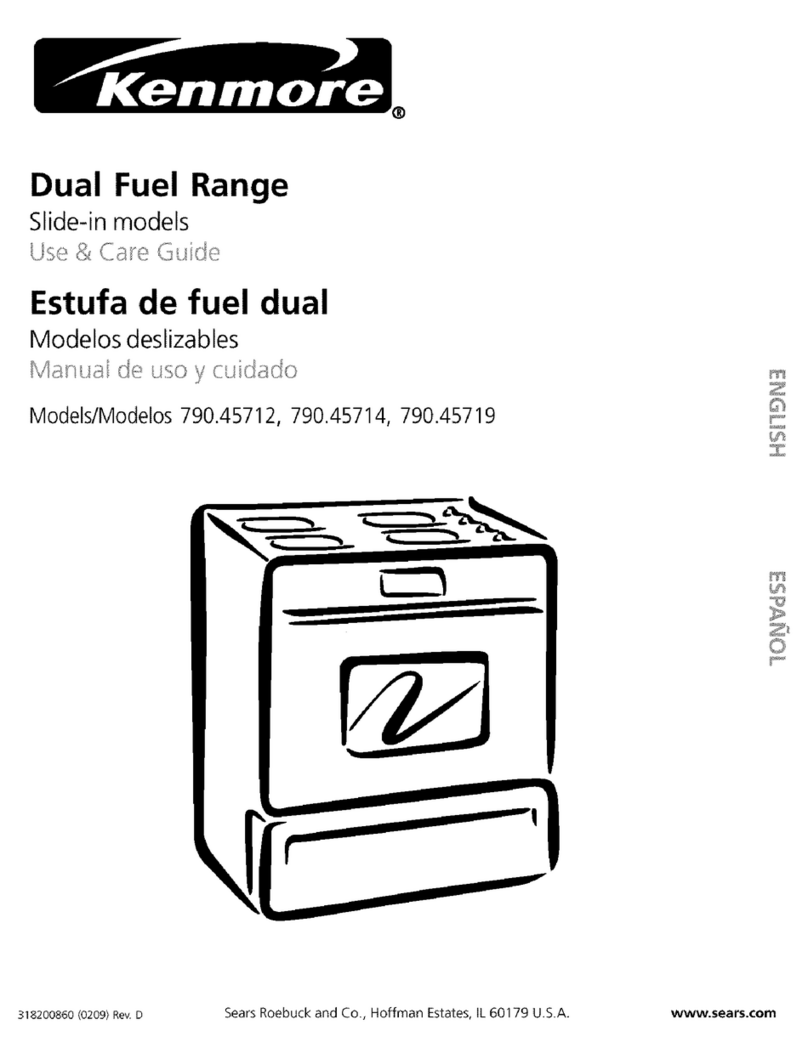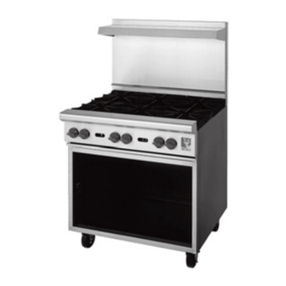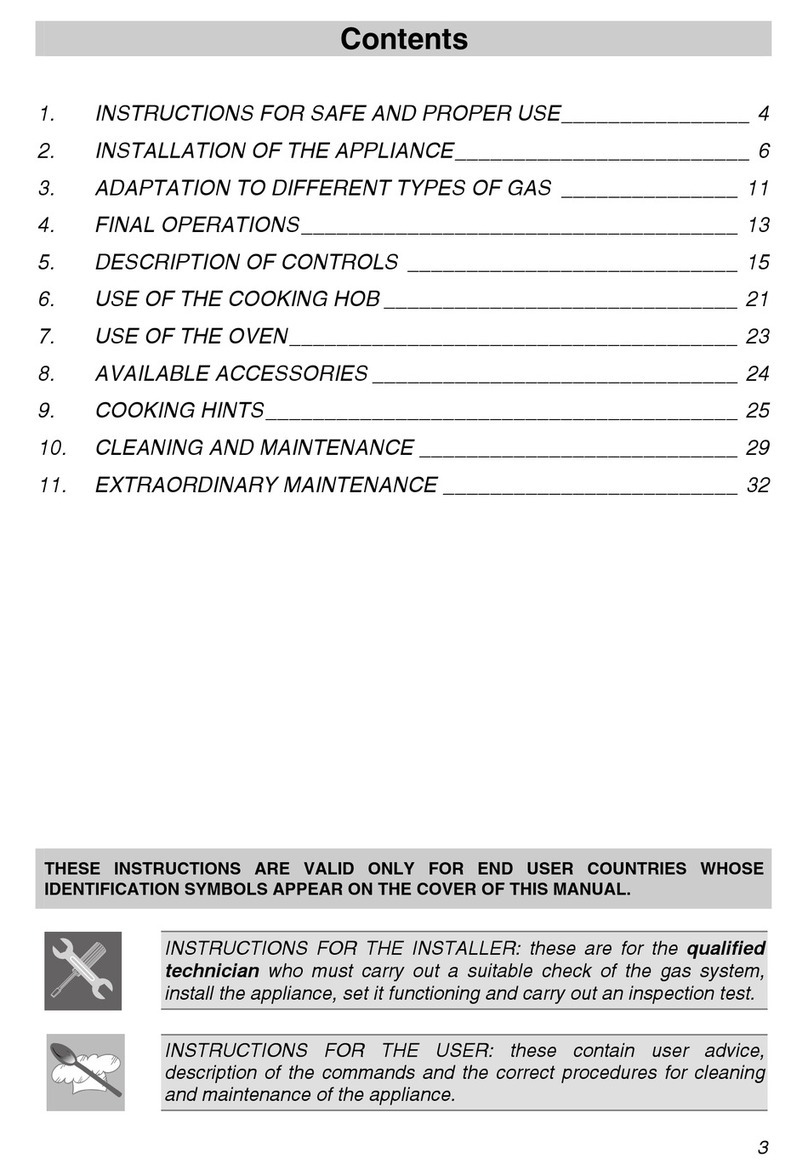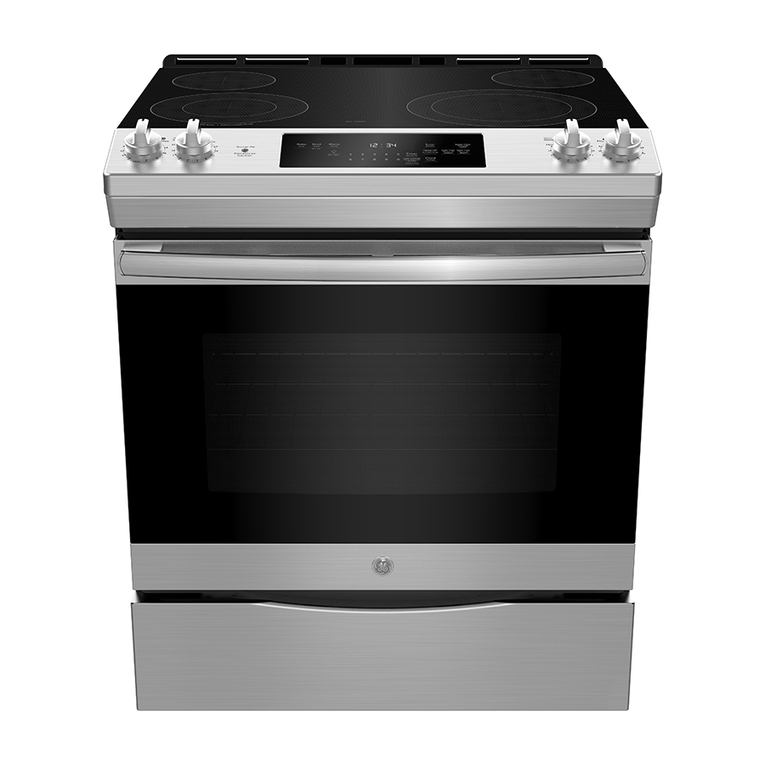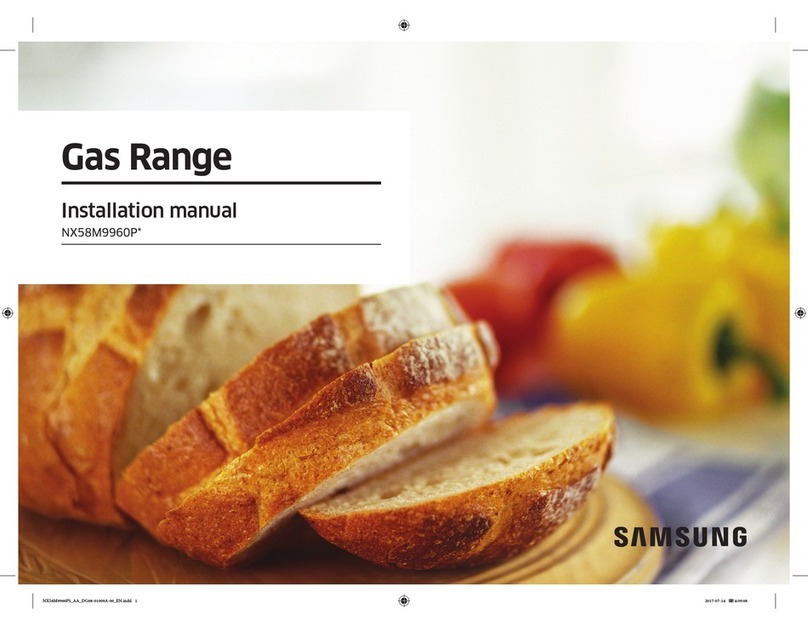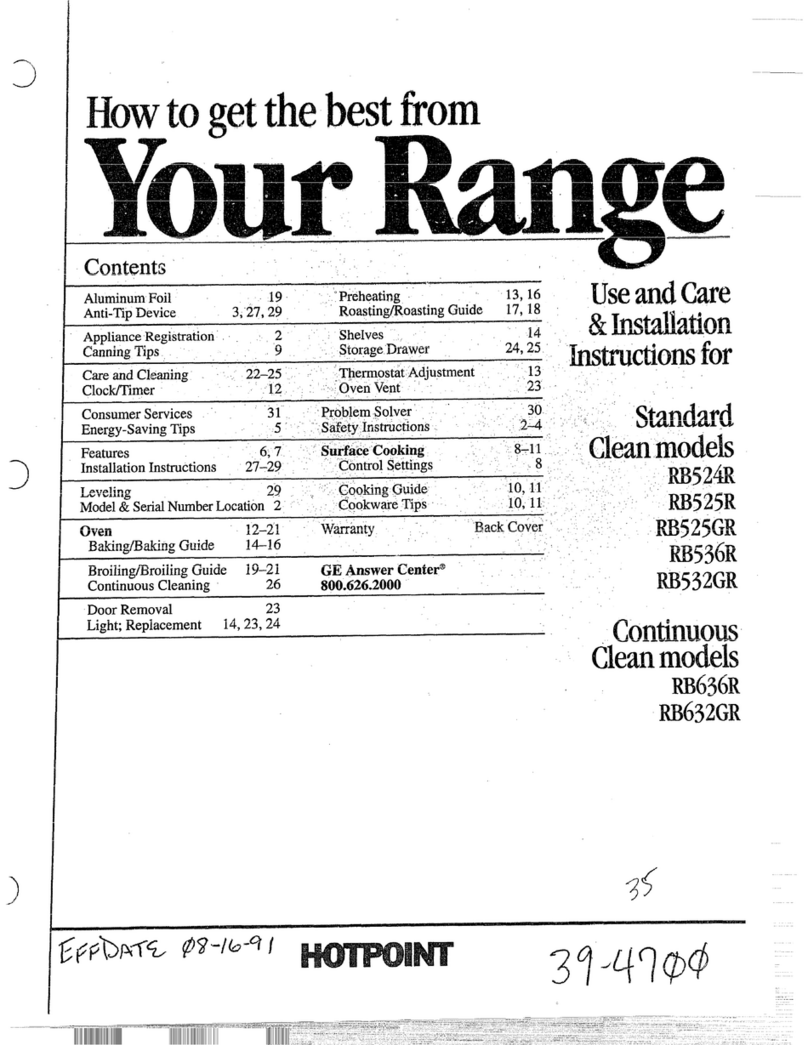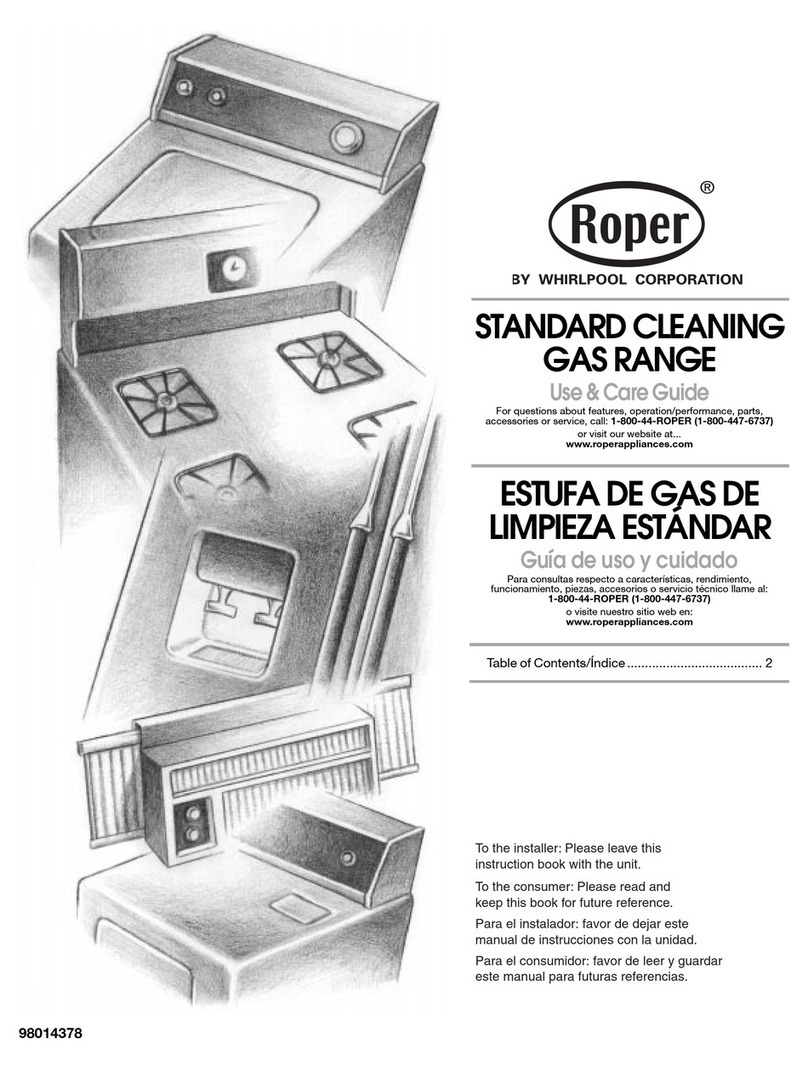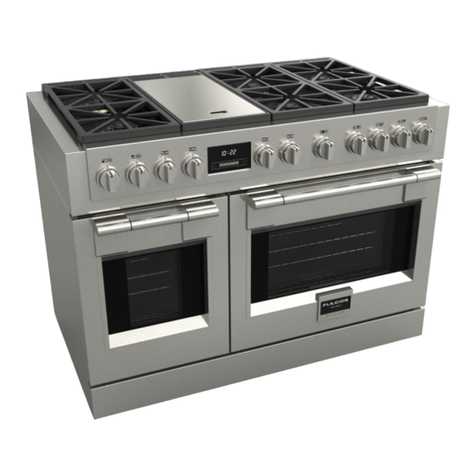
IMPORTANT SAFETY INFORMATION (cont,¢
OVENS
1. Use Care When Opening
Door--Let hot air or steam
escape before removing or
replacing food.
2. Do Not Heat Unopened Food
Containers--Build-up of
pressure may cause container to burst and result in
injury.
3. Keep Oven Vent Ducts Unobstructed.
4. Placement of Oven Racks--Always place oven
racks in desired location while oven is cool. If rack
is removed while oven is hot, do not let potholder
contact hot heating element in oven.
5. Protective Liners--Do not use aluminum foil to line
drip bowls, oven racks or oven bottoms. Improper
installation of these liners may result in a risk of
electrical shock, or fire.
SELF-CLEANING OVENS
1. Do Not Clean Door Gasket--The door gasket is
essential for a good seal. Care should be taken not
to rub, damage, or move the gasket.
2. Do Not Use Oven Cleaners--No commercial oven
cleaner or oven liner protective coating of any kind
should be used in or around any part of the liner.
3. Clean Only Parts Listed in Manual.
4. Before Self-Cleaning the Oven--Remove broiler pan,
oven racks, and other utensils.
5. Remove All Items From Rangetop and Backguard.
VENTiLATiON HOODS
1. Clean Ventilating Hoods Frequently--Grease should
not be allowed to accumulate on hood or filter.
2. When flaming foods under the hood, turn the fan on.
in Case of Fire
Fires can occur as a result of over cooking
or excessive grease. Though a fire is
unlikely, if one occurs, proceed as follows:
Surface Element Fire
1.
,
Smother the fire with a nonflammable lid or baking
soda, or use a Class ABC or BC extinguisher. Not
water. Not salt. Not flour.
As soon as it is safe to do so, turn the surface
controls to OFF. Turn off power at main circuit
breaker or fuse box.
Oven Fires
1. If you see smoke from your oven, do not open oven.
2. Turn oven off.
3. As an added precaution, turn off power at main
circuit breaker or fuse box.
4. Turn on vent to remove smoke.
5. Allow food or grease to burn itself out in oven.
6. If smoke and fire persist, call fire department.
7. If there is any damage to components, call an
authorized servicer before using range.
o
o
o
o
o
o
o
o
o
Precautions
•Do not cook food directly on
rangetop surface, always use
cookware.
Do not mix household cleaning products. Chemical
mixtures may interact with objectionable or even
hazardous results.
Do not put plastic items on warm cooking areas. They
may melt and stick.
Do not lift or move range by grasping main cooktop.
This can result in main top shattering or cracking.
Do not lift or move range by grasping oven door. This
can result in door glass breaking or shattering.
Oven door contains a glass window. While this glass is
built to be sturdy and resistant, it is glass and should
be treated with care.
Do not slide rough metal objects across rangetop
surface. Scratching or metal marking can result.
Do not leave fat heating unless you remain nearby. Fat
can ignite if overheated by spilling onto hot surfaces.
Do not allow pots to boil dry as this can cause damage
to cooking surface and pan.
Do not use rangetop surface as a cutting board.
Do not use range for storage or as a display counter.
SAVE THESE INSTRUCTIONS
m
D
